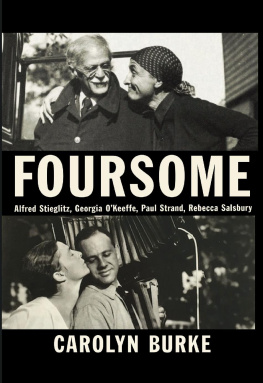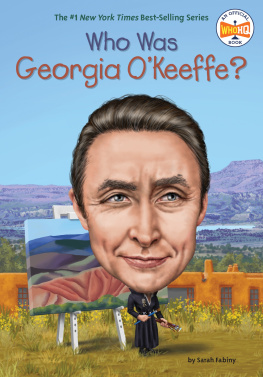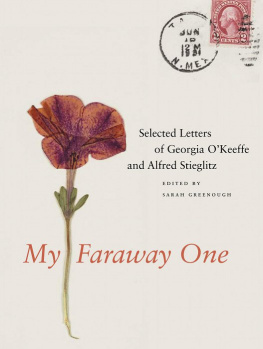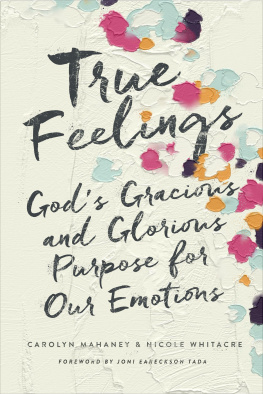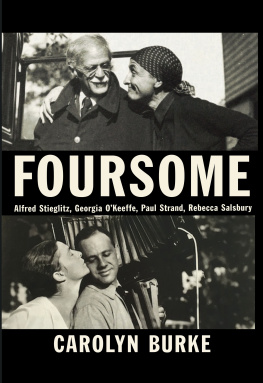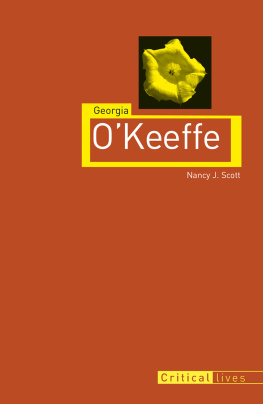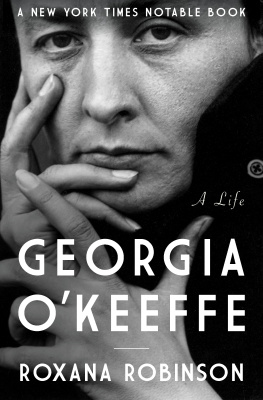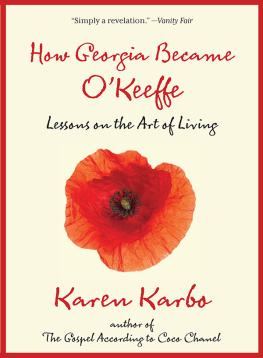Acknowledgments
I began this tale of a close-knit foursome with little sense of how intricate it would prove to be. What I first thought of as a story about creative affinities came to resemble a constantly changing choreography, one that figured the partners relations not in twos but multiplied four by four.
I started with Rebecca Salsburys letters at the Center for Creative Photography. The CCP staff guided my research in the Paul Strand Archive, which also holds Strands correspondence from Alfred Stieglitz, Georgia OKeeffe, and others that allowed me to reconstruct the chronologies of their friendships. David Benjamin, Katie Sweeney, James Uhrig, and Shandi Wagner provided help of many kinds; Leslie Squyres gave generously of her time and attention over the course of the project.
With the assistance of Amanda Bock of the Philadelphia Museum of Arts Department of Photography, I was able to study Strands portraits of Rebecca at a time when the PMAs exceptional collection of his prints was still being cataloged, an invaluable resource for this project.
Sarah Greenough, Senior Curator and Head of the Department of Photography at the National Gallery of Art, arranged for me to examine original prints held there by Stieglitz and Strand, shared hard-to-obtain documents, and steered me in the right direction on numerous occasions.
This book would not have been possible without the aid of the staff at Yale Universitys Beinecke Rare Book and Manuscript Library, where the bulk of the documents consulted are held. Nancy Kuhl, Curator for Poetry, Yale Collection of American Literature, gave generously of her time; I also received assistance from Moira Fitzgerald, Anne Marie Menta, John Monihan, Matthew Rowe, Natalia Sciarini, and Adrienne Sharpe.
The staff of the Georgia OKeeffe Museum were unfailingly helpful. I would like to thank Tori Duggan, Elizabeth Ehrnst, and Kira Randolph, as well as Cody Hartley, Senior Director of Collections and Interpretation.
At the University of California, Santa Cruz, the staff of McHenry Library found whatever I needed; Dean Tyler Stovall and Irena Poli c of the Department of Humanities gave invaluable support; Jennifer Chu offered help in the final stages; Jay Olson kept me digitally fit.
For access to material in the following private collections and for their insights, I am grateful to Alan B. Macmahon and Gail Macmahon Cornaro; Ellen Lowe and Sue Davidson Lowe; and the late Nate Salsbury III, Ellen Salsbury, and Peter Salsbury, without whose warm collaboration the story of Rebecca could not have been written.
For their gifts of time, materials, and advice I would like to thank the following institutions and people: Ansel Adams Publishing Rights Trust, Claudia Rice; Currier Museum of Art, Meghan L. Petersen; Harwood Museum of Art, Jina Brenneman and Debi Vincent; Lachaise Foundation, Paula Hornbostel; Monmouth County Historical Association, Laura M. Poll; Museum of International Folk Art, Laura Addison, Caroline Dechert, and Carrie Hertz; Museum of Modern Art Library, Lori Salmon; New York Public Library, Billy Rose Theater Division, Michael Messina; Roswell Museum and Art Center, Candace Jordan-Russell; Southwest Research Center, Nita Murphy; University of Delaware Library, Rebecca Johnson Melvin; University of New Mexico Art Museum, Bonnie Verardo; Wharton Esherick Museum, Katie Wynne.
Several people who knew my subjects personally or through their work helped me form my own picture of them. While Strand remains an enigmatic figure, the late Richard Benson illuminated his later years, as did John Walker, whose documentary Under the Dark Cloth is the best portrait of the photographer. Olga Vrana recalled moments with Strand when she was a child; Rebecca Busselle told me about her time with Hazel Kingsbury after his death. Calvin Tomkins, who interviewed both Strand and OKeeffe for The New Yorker, encouraged me to see the group as a whole. The late Doris Bry shared recollections, including OKeeffes high-handed treatment of her; Tony Berlant described OKeeffe at Ghost Ranch. I gained insight into life in Taos from Susan Dicus Chittim, Florence Ilfeld Beier, and Rena Rosequist; Kevin Cannon invited me to the Casita Rosa when I was staying at Los Gallos, now a guesthouse and cultural center that still evokes the reign of Mabel Dodge Luhan.
I relied on Katherine Hoffman and Richard Whelan for their authoritative work on Stieglitz and Suzan Campbell for her pioneering thesis on Rebecca Salsbury James. Of the extensive scholarship on OKeeffe, several studies were indispensable, including the biographies by Laurie Lisle, Roxanna Robinson, and Hunter Drohojowska-Philp, volumes by Barbara Buhler Lynes, and studies by Charles Eldredge, Sarah Greenough, Sarah Whitaker Peters, Elizabeth Hutton Turner, and Sharon R. Udall. My Faraway One, volume 1 of Greenoughs magisterial edition of the Stieglitz/OKeeffe correspondence, came out as I was starting this project, making it possible to correct past misunderstandings and offer new interpretations. (While I am indebted to books by these and other scholars of the period, any factual or interpretive errors are my own.)
Many people provided responsive listening, material or moral support, and encouragement. They include Tenshin Reb Anderson, Kristina Baer, Janeen Balderston, Mary Blume, Scott Bongiorno, Jesszell Boyer-Marie, Cherie Burns, Karen Butts, Candace Calsoyas, Clark Carabelas, Warwick Clarke, Wanda Corn, Roland Cortadellas, Franoise Develay-Cortadellas, Sue Dirksen, Jean Englade, Michael Englade, Jack Eschen, Pamela Hall Evans, Michael Fenisey, Christa Fraser, Denis Gallagher, Peter Gessner, Helen Greenwood, Kokyo Henkel, Patricia Hewitt, Tom Honig, Tom Hurwitz, Michle Jol, R. R. Jones, Jerry Kay, Stephen Kessler, Rosie King, James Krippner, Cecily Langdale, Richard Menschel, Drew Miller, Nita Murphy, Mary Nelson, Sarah-Hope Parmeter, Jory Post, Flo Queen-Stover, Nanette Schuster, Liz Sheehan, Bernabe Struck, Terese Svoboda, the Tuesday group, Angela Thalls, Andres Vargas, Melissa West, Michael Wolfe, and Susan Wyndham. Valda Hertzberg, my beloved mother, urged me to keep writing as her life was coming to a close; Alexandra Kennedy saw me through the later phases of the book and into the next; my family provided moral support despite my immersion in other peoples lives.
Special thanks for reading portions of the manuscript go to Anne Bast Davis, Sarah Greenough, and Annie Bishai, whose invaluable suggestions and perspectives have enriched it. This book could not have come to completion without the spirited assistance of Chessa Adsit-Morris, whose meticulous research and organizational talents ushered the project through months of manuscript preparation and image research.
I also wish to thank the following for their help with the challenges of securing image rights: Sean Campbell, Buffalo Bill Center of the West; Charlotte Chudy, Aperture Foundation; Anita Duquette, Whitney Museum; Ellen Grier, Cond Nast; Peter Huestis, National Gallery; Nigel Harrison, Blake Hotel Collection; Betsy Evans Hunt, Todd Webb Archive; Fernanda Meza, Artists Rights Society; Diana Reeve, Art Resource; Claudia Rice, Ansel Adams Publishing Rights Trust; Michelle Roberts, New Mexico Museum of Art; David Rozelle, San Francisco Museum of Modern Art; Whitney Scullawi, Crystal Bridges Museum; Richard Sieber, Philadelphia Museum of Art; Norm Scott, Ned Scott Archive; Laura West, Sothebys; the owners of work by OKeeffe in private collections; and Paolo Gasparini, who graciously allowed me to reproduce his portrait of Paul Strand.
As always, I am grateful to my agents, Georges, Anne, and Valerie Borchardt. I have been fortunate to work once again with the exceptional people at Knopf. Thanks to Carol Edwards, for bringing consistency to the manuscript; Iris Weinstein for her care with the layout; Carol Carson for her imaginative cover designs; Marc Jaffee, for shepherding the book calmly and carefully through the many stages of production; and Bob Gottlieb, my perspicacious editor. I would not have attempted this tale of interwoven lives without his support; he is the best listener and reader one could hope to have.

